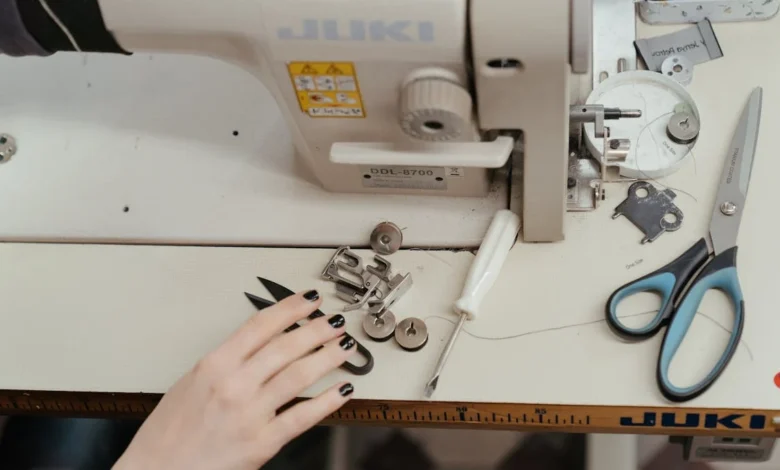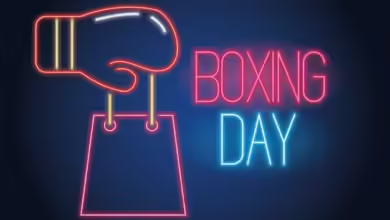Are Juki F and L Bobbins the Same? Discover the Difference Between These Sewing Must-Haves

Introduction
If you’ve recently invested in a Juki sewing machine or are knee-deep in your latest sewing project, you’ve probably come across the terms “F bobbins” and “L bobbins” and thought, What on earth is the difference? You’re not alone! For many sewing enthusiasts, are juki f and l bobins the same distinguishing between bobbin types can be a confusing endeavor—especially if you’re working with a specialty machine like a Juki. After all, with so many sewing terms and small parts to juggle, who wouldn’t feel a bit overwhelmed?
In this article, we’re going to demystify the world of Juki bobbins. So, let’s dive in and answer the million-dollar question: Are Juki F and L bobbins the same? We’ll explore the differences between these two types, which machines they fit, and what to consider when choosing the right one for your project. Let’s sew up this bobbin mystery once and for all!
Are Juki F and L Bobbins the Same?
The short answer: No, they are not exactly the same. While Juki F and L bobbins are similar in shape and purpose, they serve different machine models and are not universally interchangeable. Here’s a breakdown to understand why.
1. Size and Shape Differences
At first glance, the Juki F and L bobbins look almost identical. They’re both cylindrical, compact, and designed to hold the thread neatly at the bottom of your sewing machine. But, there are subtle differences that can make a big impact on performance:
- Diameter: Juki F bobbins are slightly larger in diameter than L bobbins, usually by about 1mm. While this might seem minor, even a tiny difference in diameter can affect how the bobbin sits and rotates in the bobbin case.
- Thickness: F bobbins also tend to be a bit thicker than L bobbins, meaning they hold more thread but may be incompatible with machines designed strictly for L bobbins.
These variations mean that popping an F bobbin into a are juki f and l bobins the same machine built for L bobbins (or vice versa) could result in jammed threads, irregular stitching, or, worst-case scenario, machine damage.
2. Weight and Material
The materials used in Juki bobbins can also differ. Juki F bobbins often come in plastic or metal versions, while L bobbins are typically made of metal. The choice of material impacts both durability and performance:
- Plastic Bobbins: Generally lighter and quieter but may wear out faster, especially if used in heavy-duty machines.
- Metal Bobbins: More durable and stable, making them ideal for high-speed sewing or heavy-duty fabrics.
So, if you’re sewing leather, denim, or other heavy fabrics, a metal bobbin might be your best friend—especially an L bobbin for certain Juki industrial machines.
Choosing the Right Bobbin for Your Juki Machine
So, what’s the best bobbin for your Juki sewing machine? It all boils down to compatibility with your specific model. Here are a few factors to consider when choosing between F and L bobbins.
A Quick Guide to Machine Compatibility
Most Juki machines specify the type of bobbin they require, so it’s essential to check your machine’s manual before purchasing new bobbins. To help you out, here’s a rough guide:
- Juki Home Sewing Machines (F Series): These usually are juki f and l bobins the same take F bobbins, designed to fit models like the Juki HZL-F600 and HZL-F300.
- Juki Industrial Machines (L Series): L bobbins are often compatible with industrial models like the Juki DDL-8700, a popular choice for commercial use.
Not all Juki machines use F or L bobbins, so make sure to check the model before ordering! If you have both home and industrial Juki machines, you might need a separate set of bobbins for each.
Why Can’t I Just Use Any Bobbin?
You might be tempted to grab whichever bobbin you have lying around and use it in any machine, but that can spell disaster for your sewing projects. Here’s why using the correct bobbin type matters:
- Thread Tension Issues: Bobbins are engineered with precise tension requirements. Using an incorrect bobbin can throw your tension off, causing loose or overly tight stitches.
- Machine Wear and Tear: A bobbin that doesn’t sit snugly in the bobbin case can damage your machine over time, leading to costly repairs.
- Stitch Quality: The right bobbin ensures consistent stitching. are juki f and l bobins the same An incompatible bobbin may lead to skipped stitches, inconsistent loops, or unsightly bunching.
Tips for Buying Juki Bobbins
Shopping for bobbins can be trickier than it seems, especially if you’re new to Juki machines. Here’s a quick checklist for buying the perfect bobbin:
- Check Your Manual: Every Juki machine manual will specify the type of bobbin it requires. If you’re not sure, a quick look at the manual can save you a headache down the road.
- Avoid Generic Bobbins: Generic bobbins may look like they fit but can cause problems in high-performance machines like Juki. Stick to Juki-brand or reputable third-party brands.
- Keep a Bobbin Case Handy: Using the right bobbin case with your F or L bobbin further ensures proper tension and alignment.
- Buy in Bulk: If you sew frequently, consider buying bobbins in bulk. Many online sewing stores sell sets of 10, 20, or even 50 bobbins at a discounted rate.
Common Questions about Juki F and L Bobbins
Q1: Can I use Juki F bobbins in my industrial Juki machine?
A: No, Juki F bobbins are typically designed for home sewing machines, whereas industrial Juki machines often require L bobbins. Mixing these up may cause stitching issues or even machine damage.
Q2: Are F and L bobbins interchangeable?
A: In most cases, no. F and L bobbins have slightly different sizes and thicknesses, meaning they aren’t universally compatible across all Juki models. Always check your machine’s requirements.
Q3: What happens if I use the wrong bobbin in my Juki machine?
A: Using the wrong bobbin can lead to thread jams, irregular stitching, and potential damage to your sewing machine. Incompatible bobbins can even create problems with the bobbin tension, impacting the quality of your stitches.
Q4: How can I identify my bobbin type if it’s unmarked?
A: Measure the diameter and thickness, then compare it to Juki’s specifications for F and L bobbins. You can also check the bobbin case size, as it will often reveal the compatible bobbin type.
Wrapping Up: Are Juki F and L Bobbins the Same?
So, are Juki F and L bobbins the same? Not quite! Although they share similarities, these two bobbin types serve different machines and purposes. By understanding the differences in size, shape, and compatibility, you can choose the best bobbin for your sewing projects and avoid common pitfalls.
If you’re still unsure, remember: your Juki manual is your best friend. And when in doubt, stick with Juki-approved bobbins to keep your sewing machine running smoothly. Happy stitching!



